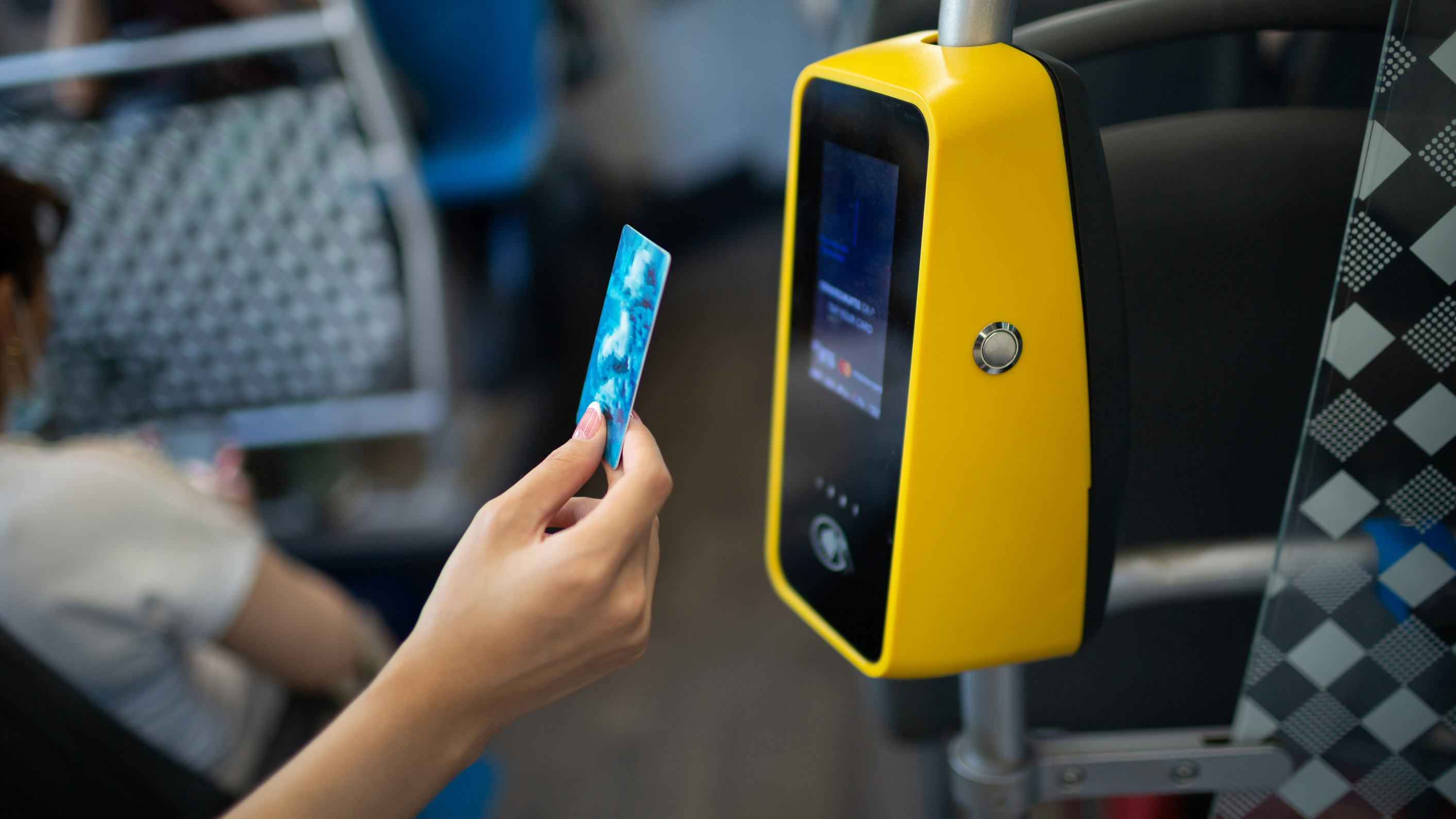How open-loop contactless payments can increase public transit ridership
by Kalin Hitrov

Successful apps have one thing in common. They just work. Their customers rarely have to think about how.
For US transit agencies, contactless open-loop payments are a way to replicate this experience for riders. And like the best apps, getting it right means users keep coming back. Again and again.
Best of all, the hard work has already been done. The technology is there, and many people are now used to contactless payment methods. Extending this behavior to open-loop systems feels like a natural progression. Riders simply tap their mobile device – or credit, debit, prepay card – to pay transit fares.
Alongside ease-of-use, there are plenty of societal benefits too. Open-loop helps open up public transit to people who may otherwise be excluded for different reasons. Below you’ll find an exploration of open-loop’s potential – both economically and socially.
Passenger convenience
A quick tap and riders are aboard in seconds. There are no queues while people wait for them to find their ticket, or produce some cash to pay. They can travel on their terms, using their preferred method, whether that’s a contactless card, phone, or wearable.
Accessibility and inclusivity
The Federal Reserve found 6% of US adults were unbanked in 2022. That’s around 20 million people who are without a checking or savings account, and can only buy transit tickets using cash. An open-loop system allows prepay methods, such as Cash App Card, that help bridge this digital divide.
Open-loop also allows public transit operators (PTOs) to simplify how they provide discounts to different eligibility groups. US operators have to offer concessions if they receive federal funding, so relying on manual applications, with physical ID and with closed-loop systems, was an inefficient process.
The State of California, in partnership with Littlepay, solved this problem with the Cal-ITP benefits program. Groups such as students, veterans, and older people, can enter details into an online portal, verify their eligibility against centralized government data, and link to their preferred payment card.
Fare flexibility and incentives
Open-loop offers a way to allow customers to avoid getting locked into using a specific provider’s products, and where any change means experiencing inconsistencies and friction when wanting to use other services.
One initiative, north of the San Francisco Bay Area, allowed riders to tap and ride buses across four counties. Passengers can pay fares once, using their preferred card, phone, or digital wallet. The seamlessness extended to being able to cap fares across each of the four transit operators’ routes. Gillian Gillett, Division Chief at The California Department of Transportation, and a leading figure in the program, says, ‘Adding contactless debit and credit card readers makes transportation more accessible and user-friendly for all riders’.
Cost-effectiveness and revenue generation
Open-loop contactless systems have already had a big positive impact in California. For example, the California Integrated Travel Project (Cal-ITP) achieves four stated goals:
- Invites travelers toward more efficient and sustainable modes of travel
- Reduces transit agency operating costs
- Simplifies every traveler’s life
- Simultaneously welcomes every single person in this country to a seamless, user-friendly system
This was designed to solve the lack of consistency between hundreds of transit providers. There was ‘no consistent way to collect fares, verify eligibility for fare discounts, or provide real-time vehicle information to customers on their phones.’
Community engagement
Open-loop doesn’t just allow passengers to benefit from fare capping. It also lets transit agencies run concession programs.
Under closed-loop systems, this usually involved eligible people having to apply and submit documents. In collaboration with Littlepay and several stakeholders, Monterey-Salinas Transit (MST) was able to solve this challenge, remove friction, and promote self-service. With its new open-loop system, the public transit provider could offer concessions to riders, simply by connecting their usual payment card to their identity and benefit eligibility.
Why now’s the right time to open the ridership loop
For transit operators that opt for open-loop, there’s no need to replace lost or expired closed-loop cards. Riders can simply use their bank-issued cards and mobile devices or wallets. Naturally, this reduces processing costs – and reliance on ticket offices, giving staff time to focus on giving more personalized customer service.
Moving away from cash frees up even more time and resources. There’s less need to manually collect fares and give change, resulting in faster transactions and reduced station congestion.
Open the door to open-loop with Littlepay
Introducing open-loop payments doesn’t have to be complex. At least, when you take a component-based approach. That’s what you gain with Littlepay.
Littlepay partners with best-in-class technology companies offering “Littlepay ready” payment readers and back offices. You connect to relevant tech and finance partner APIs, using tried-and-tested frameworks that can be adapted to your use case. You can be up and running within weeks, no need to start from scratch.
To explore how to deliver contactless open-loop payments to public transit with Littlepay, contact our team today.
Trending Topics

Project Highlights: Washington DC’s record breaking upgrade to accept open loop payments

Nevada County Connects leverages Cal-ITP’s Mobility Marketplace to elevate the payment experience across its bus network

 Insight
Insight
 Knowledge
Knowledge
 News
News



